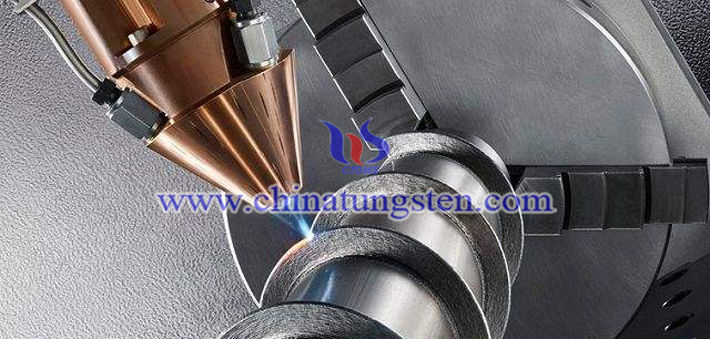Nanometer Metal Structures Using 3D Printing: Even Tungsten Material Is Achievable
- Details
- Category: Tungsten Information
- Published on Wednesday, 08 August 2018 19:35
At present, one of the difficulties of 3D printing technology is the using of refractory metal for printing, especially metals with high melting points such as tungsten, chromium and bismuth, nor the nanometer powders. This means that it is also difficult to apply 3D printing technology to nanometer tungsten trioxide powder. Over the years, scientists from all over the world have worked on new processes that can be cost-effective and achieve the desired performance requirements.

So, what is 3D printing technology? 3D printing technology is also called additive manufacturing. The use of this technology to manufacture metal parts is similar to the powder metallurgy process we use today. It is based on metal powder, such as ceramic powder and metal powder. The difference is that the material powder is not joined by sintering, but is formed by using a special adhesive to "print" the cross section of the part onto the material powder.
Recently, scientists have developed a new method that can create complex nanometer metal structures using 3D printing technology. This technology can be used in a variety of applications, such as creating 3D logic on tiny computer chips, and manufacturing engineering ultralight aircraft components, for example, to create new types of nanomaterials with different properties. .
In 3D printing, objects are built layer by layer, allowing for the creation of products that do not require conventional subtractive methods such as etching or milling. Materials scientists at the California Institute of Technology have designed an ultra-thin three-dimensional architecture in the 3D printer group (additive manufacturing machine). The three-dimensional structure is only nanometer in size, too small to see the new 3-D with the naked eye. The group prints the structure of various materials, from ceramics to organic compounds. In addition, scientists are also working hard to break through 3D printing of refractory metals like tungsten and titanium, especially when trying to make fine powders that are less than about 50 microns in size or about half the width of the hair.
Scientists bind nickel and organic molecules together to form a liquid that looks like cough syrup. They used computer software to design a structure and then built it by switching the liquid with a two-photon laser. Lasers create stronger chemical bonds between organic molecules and harden them into building blocks. Since these molecules also bind to nickel atoms, nickel will bind to the structure. In this way, the team was able to print a three-dimensional structure that was originally a mixture of metal ions and non-metallic organic molecules. Then, the structure was placed in an oven and slowly heated to 1000 ° C in a vacuum chamber. This temperature is much lower than the melting point of nickel (1455 ° C), but is hot enough to evaporate the organic material in the structure, leaving only the metal. A heating process called pyrolysis also fuses the metal particles together. In addition, since the process evaporates a large amount of structural material, its size is reduced by 80%, but its shape and proportion are maintained. The ultimate shrinkage is an important reason why the structure can be made so small. In this constructed nanostructure, the diameter of the metal beam of the printed portion is approximately 1/1000 of the size of the tip of the sewing needle.
Scientists are still working hard to continue to improve their technology in 3D printing. Although they have just printed from metallic nickel, they have shown great interest in extending the “printing” to other metals commonly used in industry, such as tungsten and titanium. Of course, the passion of scientists is not limited to this, they also want to use 3D printing technology to print other materials, including ceramics, semiconductors, piezoelectric materials and other dissimilar materials.
- Tungsten Manufacturer & Supplier, Chinatungsten Online: www.chinatungsten.com
- Tungsten News & Prices of China Tungsten Industry Association: www.ctia.com.cn
- Molybdenum News & Price: news.molybdenum.com.cn
- Tel.: 86 592 5129696; Fax: 86 592 5129797; Email: sales@chinatungsten.com



 sales@chinatungsten.com
sales@chinatungsten.com